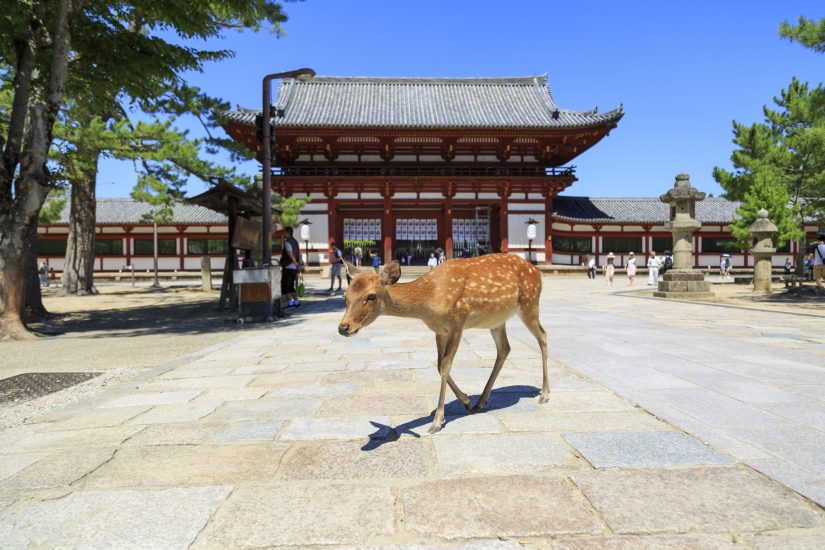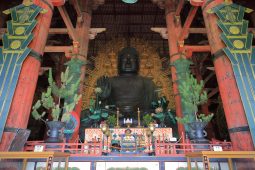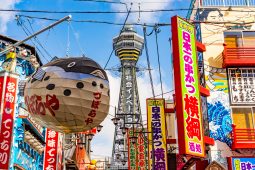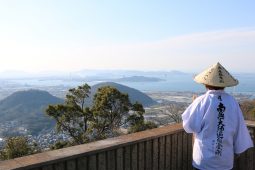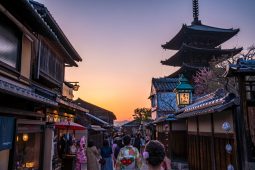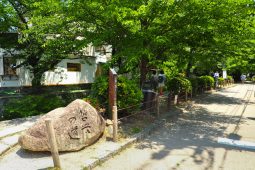Quite possibly the most common conversation I have with friends and family planning trips through Japan (right after ‘please base as few assumptions on cartoons as possible), is that they shouldn’t give Nara a visit, instead of a total focus on Kyoto.
I understand why, though. Kyoto gets all the world’s attention if you want to see a more traditional part of Japan, and it knows that. Tourist hubs that actually orient themselves around tourists have never appealed to me much, and – among other things – I think that Nara does much more to preserve the old parts of its city rather than trying to modernise its appearance. A lot of this is how I’ve come to discover Nara and visit it time and again, and now I can share that with you.
Don’t take this as anything against Kyoto, though! If anything, I would say that you should visit it, just for Kiyomizu temple, Kinkaku-ji and Ginkaku-ji alone – there’s still plenty to be had from broadening your horizons, though, which is why I’ll be walking you through some of the reasons to visit Nara. If I went through it all, this article would span several parts, and besides, there are lots of sites that go on about everything there is to see there more specifically.
So, why Nara?
Size is one factor. It’s in just the right spot, as far as I’m concerned. It’s not as massive and crowded as Tokyo, which is a relief for me because I find huge cities stifling (more practically, it adds to the noise and the time you spend in traffic jams or crowds), and it draws less attention from tourists. At the same time, it’s not remote – I may recommend towns that are in the middle of nowhere, but I’m at least self-aware about it – which means it has all the amenities and convenience you might want. Further, it does get some tourism, which means it’s prepared for international visitors: Just about everything can be found in English at least to a limited degree, which means it’s not a particularly challenging place for a visitor.
It boasts an absolutely enormous amount of temples, and better still, the big ones are all mostly clustered around the gigantic Nara Park. The rest, you’ll run into. Trust me, if you go off the beaten path even a little bit, you’re going to bump into a lot of incidental little temples, all of them beautiful, even if the small ones aren’t necessarily awe-inspiring like the more famous examples. Adding to this, you also have all of Naramachi (machi in the sense of ‘street’ and not ‘town’ in this case, if you’re familiar with the word), a wonderfully preserved neighbourhood, formerly a merchant district of shops and townhouses from about the 15th century. Besides that, if you wander through Nara, you’ll find a lot of little bits and pieces of beauty and old history in it that nobody really bothers to advertise: What I like most about Nara is that what it’s known for is genuine. It never feels like a theme park that you’ll find just another ordinary city behind.
Oh, and there’s the bus. I know it’s a little thing, but the Nara City Loop bus will take you through most of the major spots in the city, while regular buses can take you to more exact locations off the beaten path if you’re feeling adventurous, with a route map available online. A bus pass will run you 500 yen (or less than 5 USD) for an entire day, making getting around the city very easy; I’d recommend it over a car if possible, too, since finding parking space in a major Japanese city isn’t always easy. If you feel like walking more, you could try a stroll from Nara station, which will get you to a great many spots.
Lastly, if you already live in Japan, chances are you’re in one of the urban areas around, say, Yokohama or most likely Tokyo. If so, Nara is one of the closer places you could visit. Maybe a bit further than Kyoto, but easy enough; this is doubly true if you live in one of the western Japanese hubs, like Hiroshima or Osaka.


